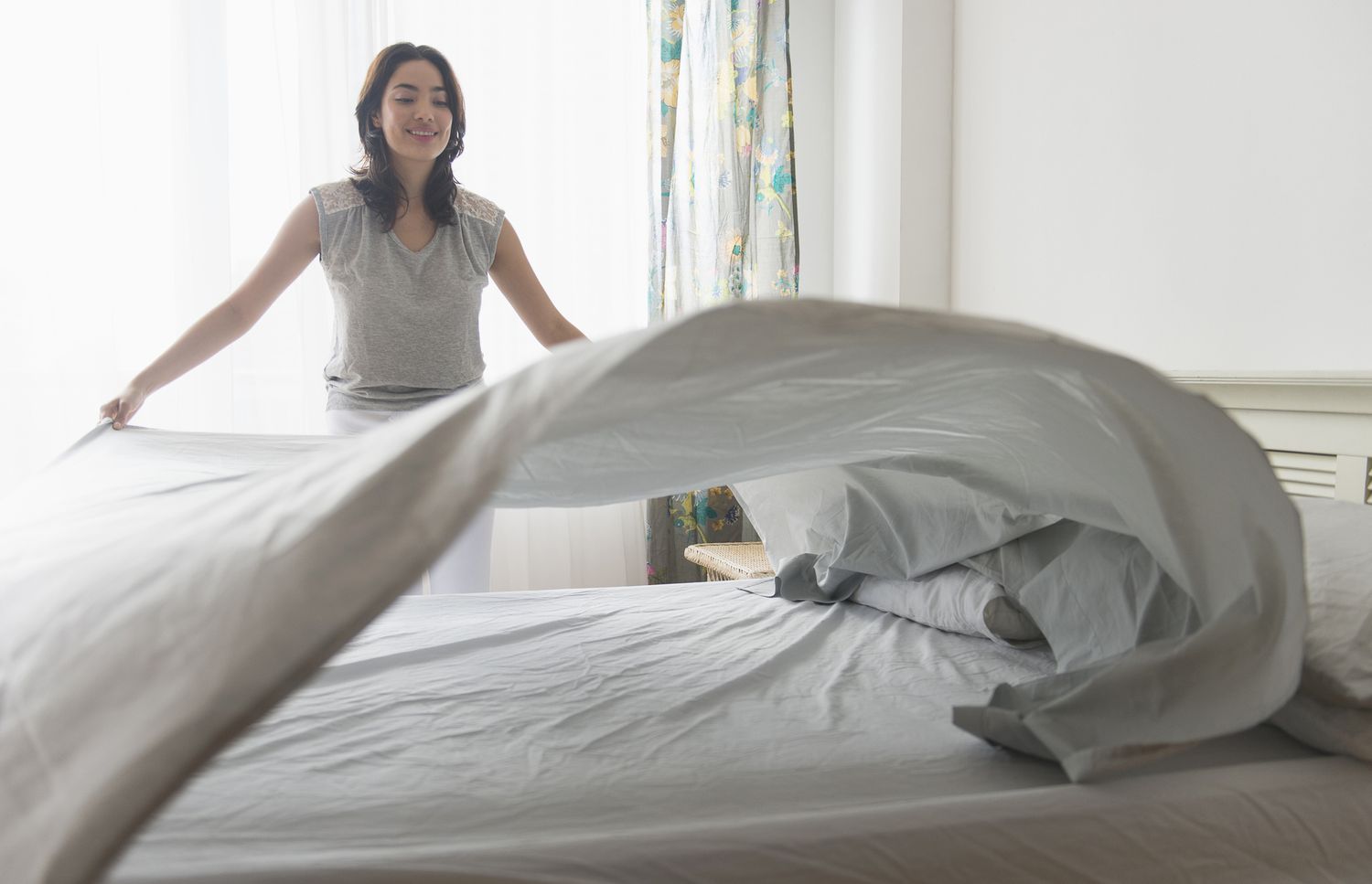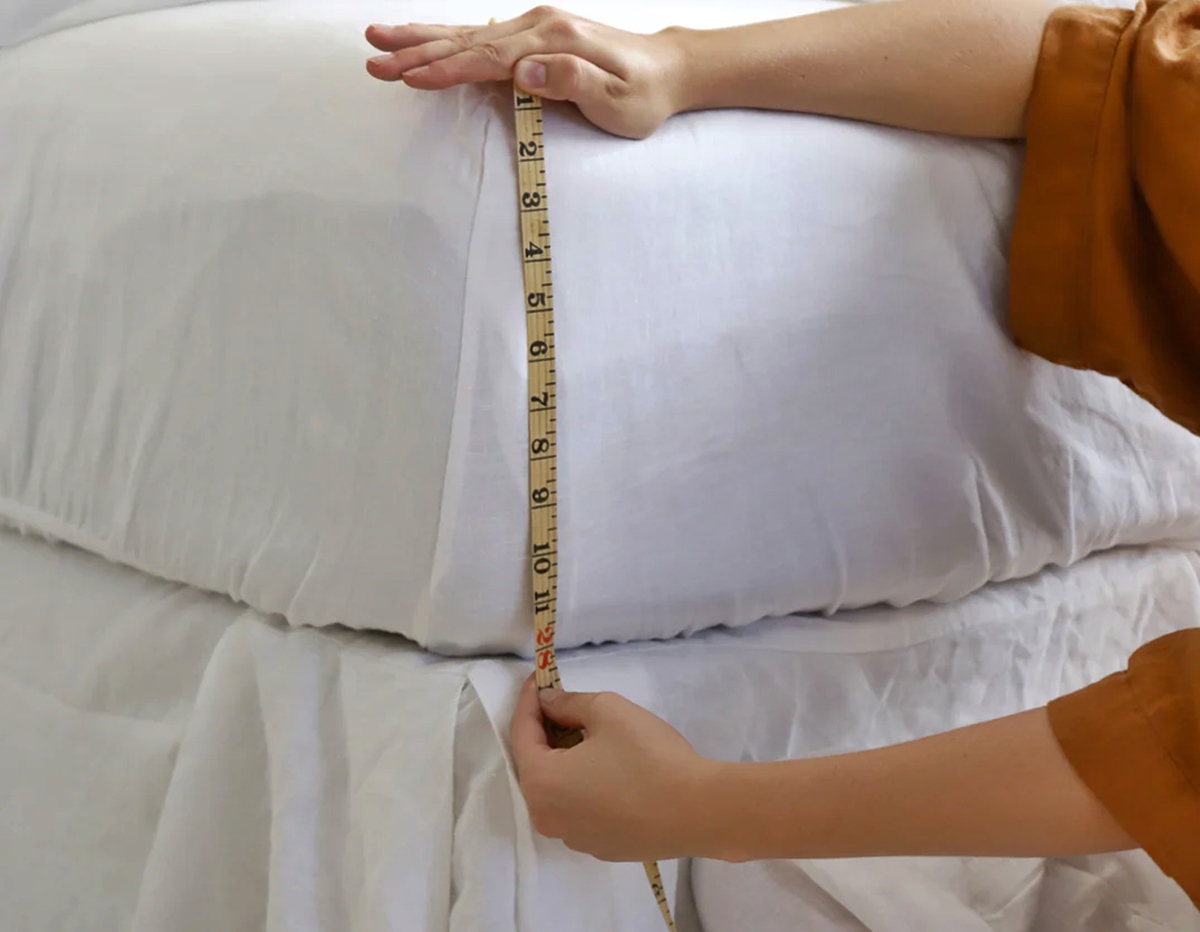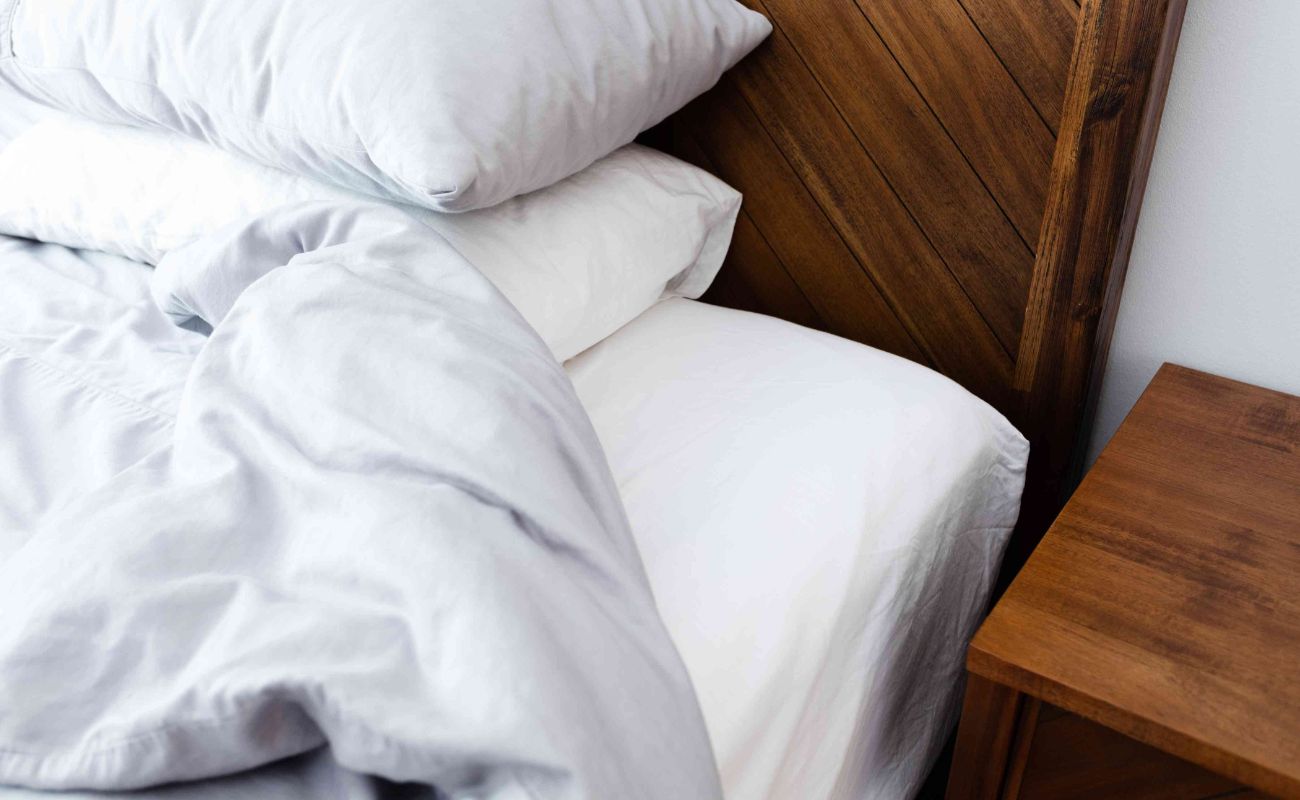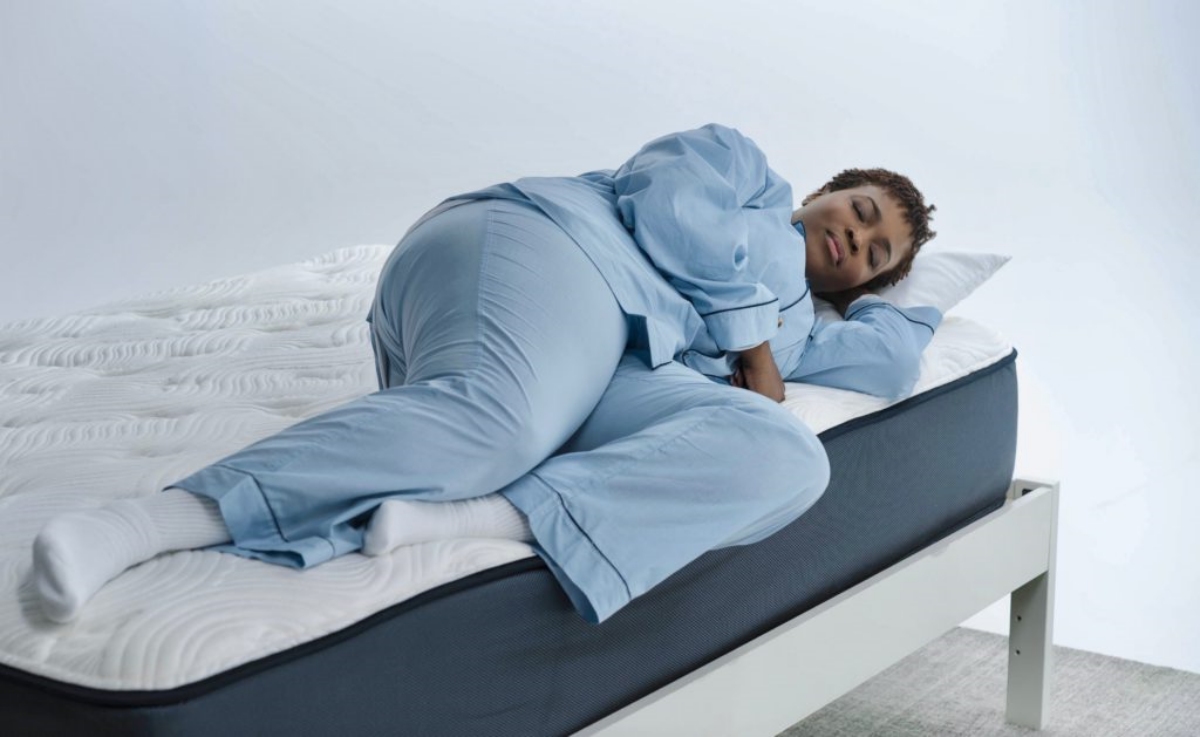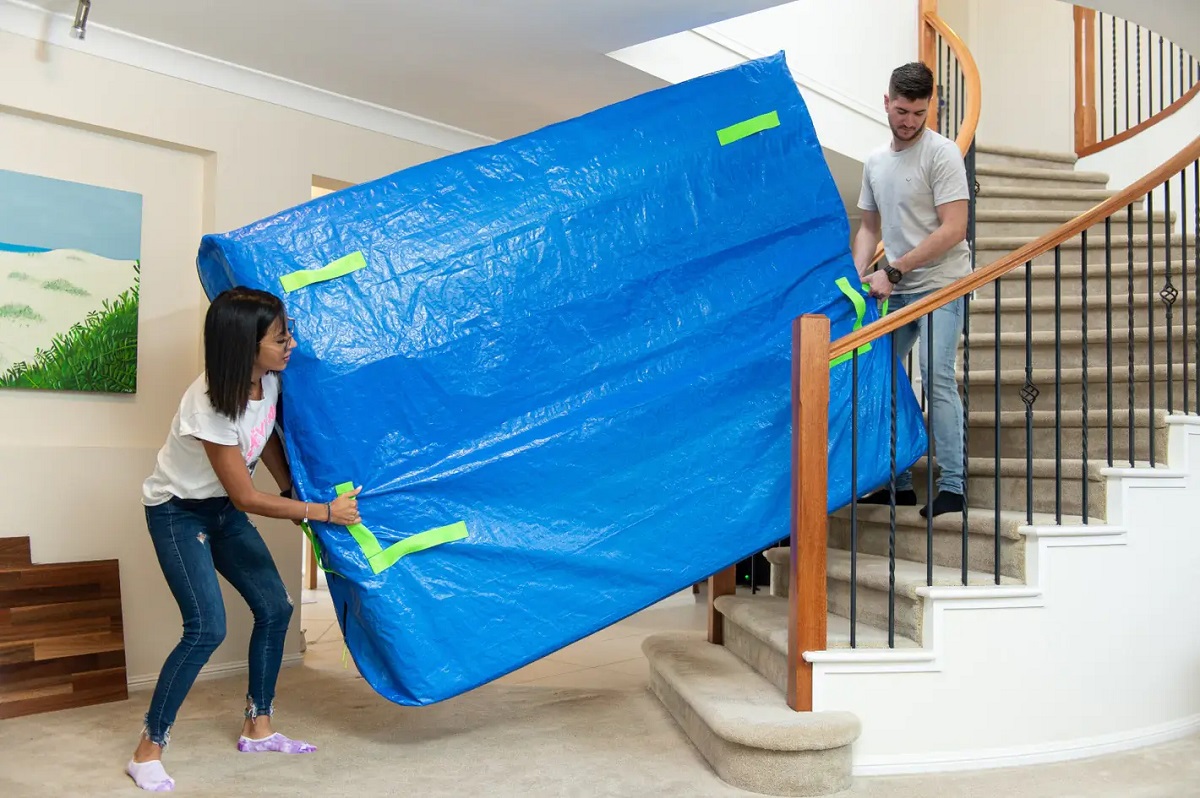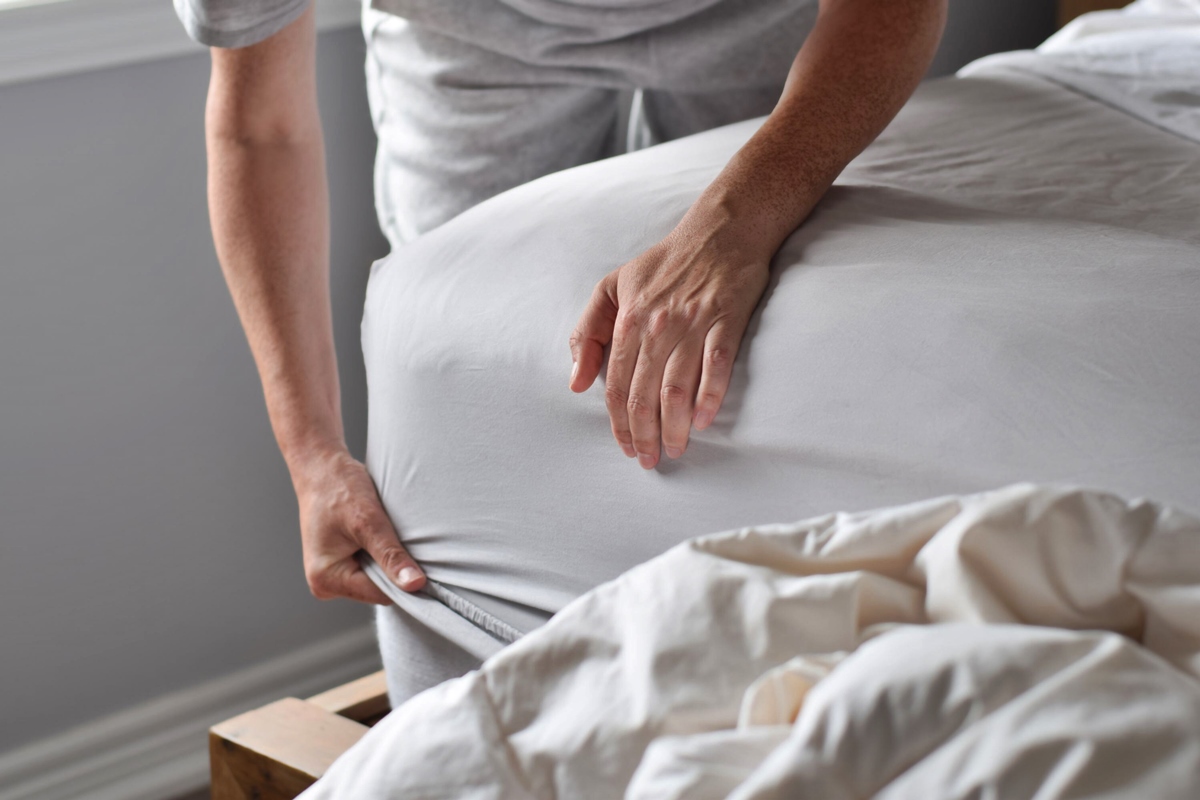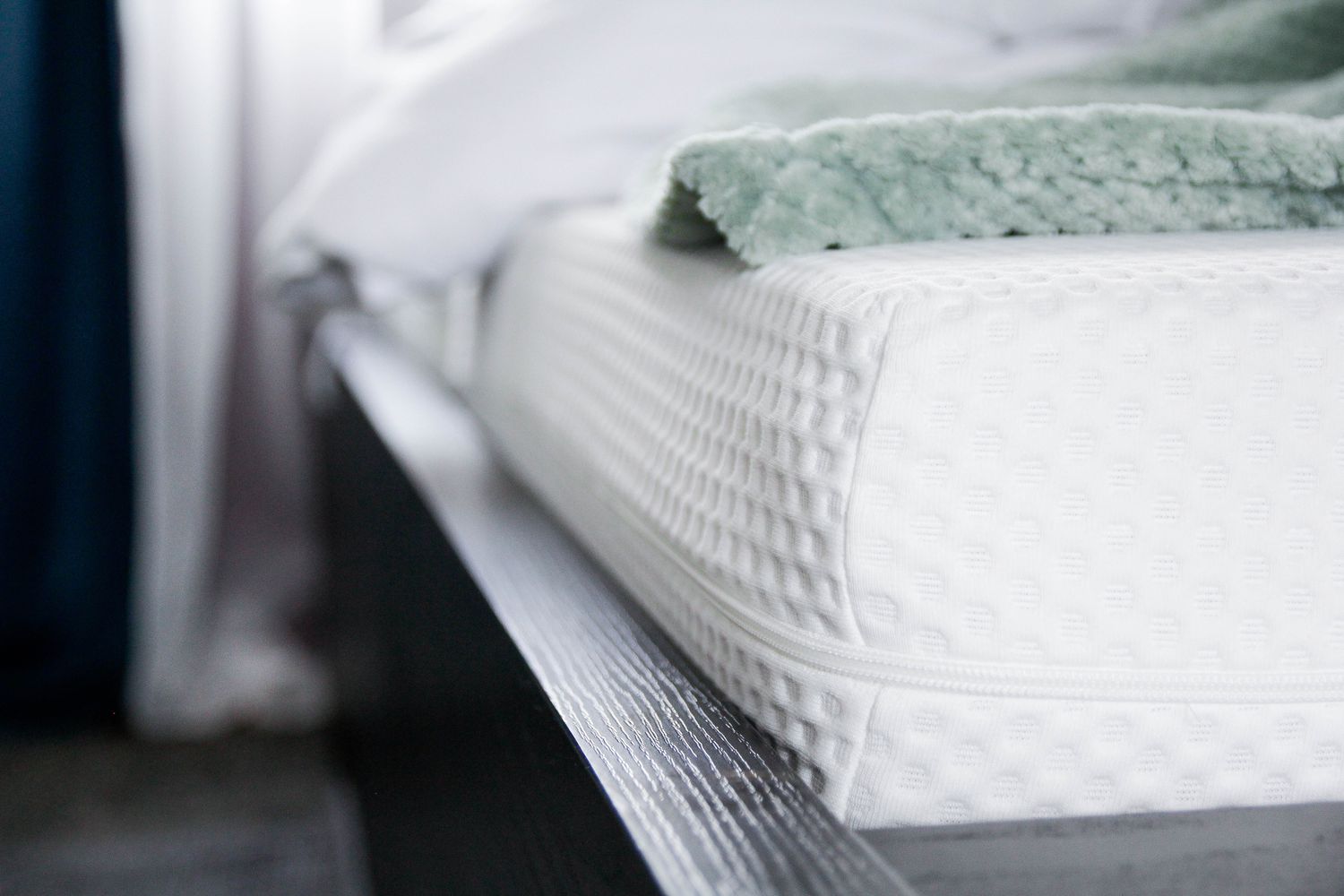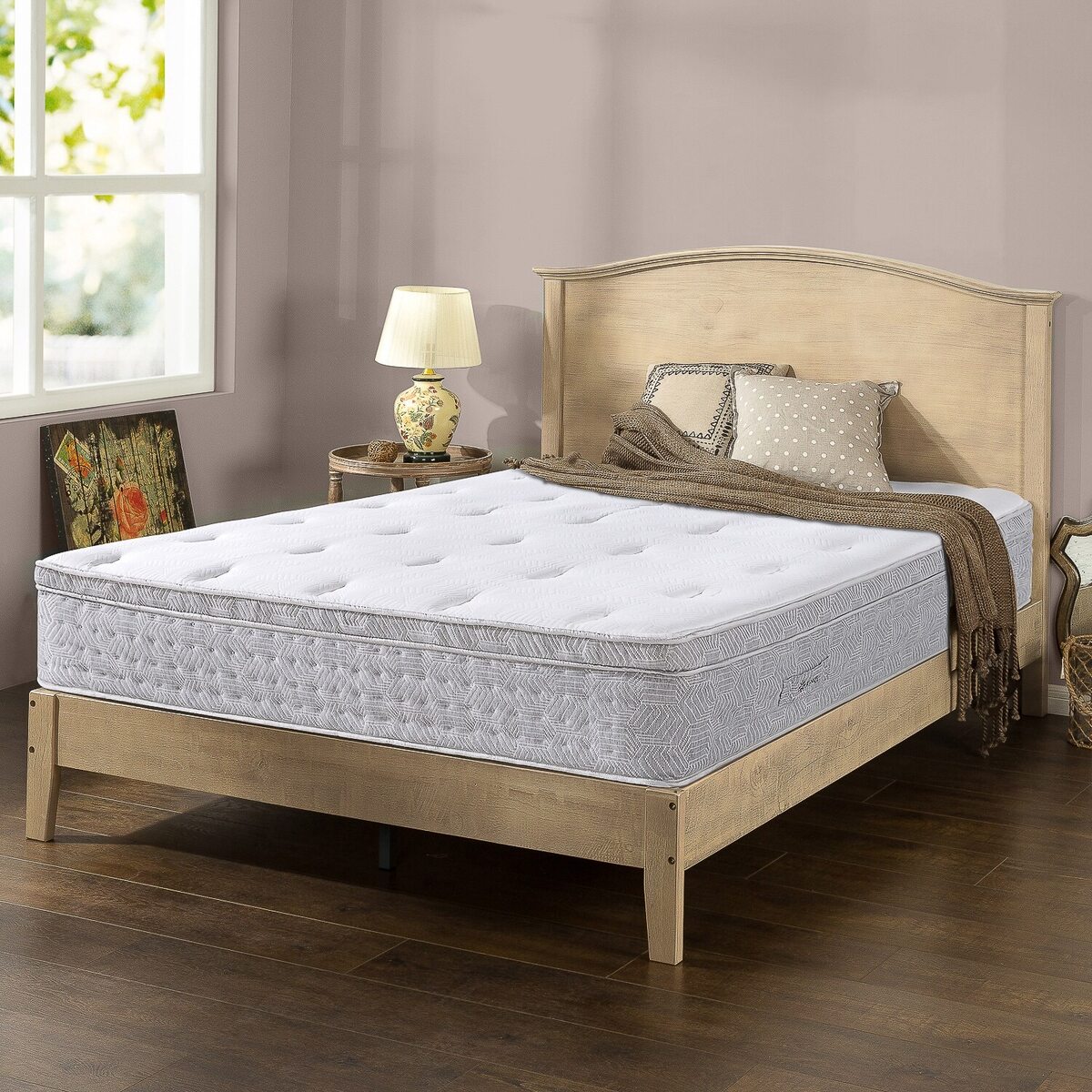Home>Furniture>Bedroom Furniture>How To Lift Heavy Mattress To Change Sheets


Bedroom Furniture
How To Lift Heavy Mattress To Change Sheets
Modified: August 27, 2024
Learn how to easily lift heavy mattresses and change sheets in your bedroom. Discover helpful tips and techniques for managing this task without strain or injury. Perfect for anyone with bedroom furniture.
(Many of the links in this article redirect to a specific reviewed product. Your purchase of these products through affiliate links helps to generate commission for Storables.com, at no extra cost. Learn more)
Introduction
Changing bed sheets can be a tedious task, especially when it comes to lifting a heavy mattress. Many people struggle with this aspect, putting themselves at risk of back injuries or straining their muscles.
Knowing the right way to lift a heavy mattress is crucial to avoid potential injuries and to make the process easier and more efficient. In this article, we will discuss the importance of learning the proper lifting techniques, as well as the safety precautions and tools needed to successfully lift a heavy mattress.
Whether you’re a homeowner, a college student, or a seasoned professional, these tips and techniques will equip you with the necessary knowledge and skills to tackle the challenge of changing sheets on a heavy mattress with confidence.
Key Takeaways:
- Proper lifting techniques for heavy mattresses are crucial to prevent back injuries, maintain mattress longevity, and improve sleep quality. Safety precautions and tools can make the process easier and safer.
- Consider alternative lifting methods and seek assistance when needed to prevent back injuries while changing heavy mattress sheets. Prioritize safety, proper technique, and listening to your body.
Read more: How Heavy Is A King Mattress
Why is it important to know the right way to lift a heavy mattress?
Lifting a heavy mattress may seem like a simple task, but it can lead to serious injuries if not done correctly. Here are a few reasons why it is important to know the right way to lift a heavy mattress:
- Preventing back injuries: Improper lifting techniques can strain your back muscles, leading to painful injuries such as sprains, strains, or even herniated discs. By learning the proper techniques, you can minimize the risk of these injuries and protect your back.
- Ensuring mattress longevity: A mattress is a significant investment, and mishandling it during the sheet-changing process can cause damage or premature wear and tear. Knowing the right way to lift and handle a heavy mattress will help preserve its structural integrity and extend its lifespan.
- Maintaining hygiene: Regularly changing and washing your bed sheets is essential for maintaining a clean and hygienic sleeping environment. By knowing how to lift a heavy mattress properly, you can change the sheets more efficiently without spreading dust, allergens, or other contaminants.
- Improving overall sleep quality: A clean and comfortable bed can significantly impact your sleep quality. By mastering the proper techniques for lifting a heavy mattress, you can change your sheets effortlessly, ensuring a fresh and inviting sleeping environment for a good night’s rest.
These reasons highlight the importance of understanding and implementing correct lifting techniques when dealing with heavy mattresses. Not only will it protect your physical well-being, but it will also contribute to the longevity of your mattress and enhance your overall sleep experience.
Safety precautions before lifting a heavy mattress
Before attempting to lift a heavy mattress, it is crucial to take the necessary safety precautions to avoid injuries. Here are some important safety measures to keep in mind:
- Assess your physical capabilities: Lifting a heavy mattress requires strength and proper body mechanics. It is essential to be aware of your physical limitations and assess whether you are fit to handle the task. If you have a pre-existing back or muscle condition, it may be best to seek assistance.
- Clear the surrounding area: Make sure the space around the bed is clear of any obstacles or hazards. Remove any objects, such as nightstands or lamps, that may impede your movement. This will provide you with enough room to maneuver and reduce the risk of tripping or falling.
- Secure a stable footing: Before lifting, ensure that you have a stable footing. Stand with your feet shoulder-width apart and on a non-slip surface. Avoid wearing socks or slippery footwear that may cause you to lose your balance while lifting.
- Use proper lifting techniques: To prevent strain on your back and muscles, it is important to use proper lifting techniques. Bend at the knees and keep your back straight while lifting. Avoid twisting or jerking motions and use your leg muscles to lift the mattress rather than relying solely on your back.
- Seek assistance if needed: If the mattress is too heavy for you to handle alone, don’t hesitate to ask for help. It is better to have an extra pair of hands to ensure a safe and controlled lift. Working together will also help distribute the weight evenly and reduce the risk of accidents.
- Take breaks between lifts: If you need to move the mattress to a different location, take breaks to avoid overexertion. Lifting a heavy mattress repetitively without rest can put excessive strain on your muscles and increase the likelihood of injuries. Pace yourself and listen to your body’s signals.
By following these safety precautions, you can minimize the risk of injuries and ensure a safe lifting experience when changing your heavy mattress.
Tools and equipment needed for lifting a heavy mattress
When it comes to lifting a heavy mattress, having the right tools and equipment can make the task much easier and safer. Here are some essential items that can assist you in successfully lifting a heavy mattress:
- Mattress straps or handles: These specialized straps or handles are designed to provide a secure grip on the mattress, making it easier to lift and maneuver. They distribute the weight evenly and reduce the strain on your hands and arms.
- Furniture sliders: Furniture sliders are small discs or pads that can be placed underneath the corners of the mattress. They allow the mattress to glide smoothly on the floor, reducing friction and making it easier to move.
- Moving blankets or pads: These thick blankets or pads provide a protective layer for the mattress during the lifting and moving process. They help prevent scratches, tears, or other damage that could occur when coming into contact with objects or surfaces.
- Dolly or hand truck: A dolly or hand truck can be a valuable tool when it comes to moving a heavy mattress, especially for long distances. It provides a platform to transport the mattress and reduces the strain on your back and arms.
- Additional manpower: If the mattress is exceptionally heavy or if you feel unsure about lifting it on your own, consider enlisting the help of a friend or family member. Having an extra pair of hands can make the process much safer and more manageable.
These tools and equipment are readily available in hardware stores or online retailers. Investing in them can significantly ease the process of lifting a heavy mattress and reduce the risk of injuries. Remember, it is always better to be well-equipped to handle the task at hand.
When lifting a heavy mattress to change sheets, ask for help to avoid straining your back. Lift with your legs, not your back, and use a mattress lifter tool if available.
Step-by-step guide on how to lift a heavy mattress to change sheets
Changing sheets on a heavy mattress can be daunting, but with the right technique, it can be a breeze. Follow these step-by-step instructions to lift a heavy mattress and change the sheets safely and efficiently:
- Gather your tools: Before you begin, make sure you have all the necessary tools and equipment, such as mattress straps or handles, furniture sliders, and moving blankets or pads.
- Clear the area: Remove any objects around the bed and ensure the space is clear for you to move safely.
- Loosen the sheets: Start by removing any pillows or accessories from the bed. Loosen the sheets by lifting the corners at the foot of the mattress and tucking them underneath. Do this on both sides of the bed.
- Position the mattress straps or handles: If you have mattress straps or handles, position them securely on each side of the mattress for a firm grip.
- Lift with proper technique: Stand in front of the mattress, bend your knees, and use your leg muscles to lift the mattress. Avoid bending at the waist or using your back to lift. Engage your core muscles for stability.
- Transfer the mattress: If you need to move the mattress to a different location, carefully transport it using a dolly or hand truck, making sure to secure it with moving blankets or pads.
- Replace the sheets: With the mattress lifted or moved, remove the old sheets and replace them with fresh ones. Smooth out any wrinkles or creases.
- Lower the mattress: When you’re ready to put the mattress back in place, lower it slowly and gently onto the bed frame. Ensure it is properly aligned and centered.
- Secure the sheets: Once the mattress is back in place, tuck the fitted sheet tightly around the corners of the mattress. Smooth out the top sheet and add any additional bedding or pillows.
- Clean up and store your tools: Put away any tools or equipment used during the process, and tidy up the area around the bed.
Following these steps will help you lift a heavy mattress safely and change the sheets without strain or injury. Remember to listen to your body and take breaks if needed. With practice, you’ll become more comfortable and proficient in this task.
Alternative methods for lifting a heavy mattress
If you find that traditional lifting techniques are not suitable for your physical capabilities or if you’re looking for alternative methods to lift a heavy mattress, here are a few options to consider:
- Using a mattress lift system: Mattress lift systems are electric or hydraulic devices designed specifically for lifting heavy mattresses. They eliminate the need for manual lifting and allow you to adjust the mattress height effortlessly.
- Using a mattress mover or lifter: These specialized tools are designed to lift and move heavy mattresses with ease. They typically consist of leverage bars or straps that securely grip the mattress, allowing you to lift and transport it more efficiently.
- Disassembling the bed frame: If feasible, disassembling the bed frame can make lifting a heavy mattress much easier. By removing the individual components of the bed frame, such as the headboard, footboard, and side rails, you can reduce the weight and bulk, making it more manageable to lift.
- Seeking professional help: In situations where the mattress is exceptionally heavy or if you have physical limitations, it may be best to enlist professional movers or furniture technicians. They have the necessary expertise and equipment to safely lift and transport heavy mattresses without risking injury.
It’s important to choose the method that suits your needs and capabilities. The key is to prioritize safety and find a solution that allows you to lift the heavy mattress without straining your muscles or risking injury.
Remember, if you’re unsure or uncomfortable with any lifting method, it’s always a good idea to seek assistance. Your safety and well-being should be the top priority when dealing with heavy objects like mattresses.
Tips for preventing back injuries while lifting a heavy mattress
Lifting a heavy mattress can put a strain on your back and increase the risk of injuries if not done properly. Here are some essential tips to help you prevent back injuries while lifting a heavy mattress:
- Warm-up and stretch: Before attempting to lift a heavy mattress, take a few minutes to warm up your muscles and stretch your back, legs, and arms. This will help prepare your body for the physical exertion and reduce the chances of muscle strains.
- Assess the weight: Determine the weight of the mattress before lifting it. If you feel it is too heavy or exceeds your physical capabilities, consider using alternative lifting methods or seeking assistance.
- Use proper lifting technique: Bend at the knees and keep your back straight while lifting the mattress. Engage your leg muscles to generate the lifting force, rather than relying primarily on your back muscles. Avoid twisting or jerking motions during the lift.
- Do not lift alone: Whenever possible, seek assistance from a friend or family member when lifting a heavy mattress. Having someone to share the weight and provide support can significantly reduce the strain on your back and minimize the risk of injuries.
- Take breaks: If you need to lift the mattress multiple times or move it over a long distance, take regular breaks to rest and recover. Overexertion can lead to muscle fatigue and increased vulnerability to injuries.
- Use lifting aids: Consider using tools such as mattress straps, handles, or furniture sliders to assist in lifting and moving the mattress. These aids distribute the weight more evenly and reduce the strain on your back.
- Maintain good posture: Pay attention to your posture throughout the lifting process. Stand tall, keep your shoulders back, and avoid slouching or hunching forward. This helps maintain proper alignment and reduces the stress on your back.
- Listen to your body: If you feel any sudden pain or discomfort while lifting the mattress, stop immediately. Pushing through the pain can worsen an existing injury or lead to a new one. Rest, seek medical attention if necessary, and only resume lifting when you are fully recovered.
By following these tips, you can significantly reduce the risk of back injuries while lifting a heavy mattress. Prioritizing proper lifting techniques, seeking assistance when needed, and being mindful of your body’s limitations are crucial to maintaining a healthy and injury-free back.
Conclusion
Lifting a heavy mattress to change sheets doesn’t have to be a daunting task. By knowing the right techniques, taking necessary safety precautions, and using the appropriate tools and equipment, you can make the process easier, more efficient, and safer.
In this article, we discussed the importance of knowing how to lift a heavy mattress properly. We highlighted the risks of improper lifting techniques and the potential for back injuries or damage to the mattress. By following the step-by-step guide, you can safely lift and move a heavy mattress to change the sheets without putting unnecessary strain on your back.
We also explored different tools and equipment that can assist in lifting a heavy mattress, such as mattress straps, furniture sliders, or a mattress mover. These tools can provide added support and make the task more manageable, reducing the risk of injuries.
Moreover, we discussed alternative methods for lifting a heavy mattress, including using mattress lift systems, mattress movers, or seeking professional help. These options are particularly helpful for individuals with physical limitations or when dealing with exceptionally heavy mattresses.
Lastly, we provided tips for preventing back injuries while lifting a heavy mattress. By warming up, using proper lifting techniques, taking breaks when needed, and listening to your body, you can greatly reduce the risk of strains, sprains, or other back-related injuries.
Remember, the key to safely lifting a heavy mattress is prioritizing your well-being and practicing caution. By implementing the knowledge and techniques shared in this article, you can confidently tackle the task of changing sheets on a heavy mattress, ensuring a comfortable and hygienic sleeping environment.
Frequently Asked Questions about How To Lift Heavy Mattress To Change Sheets
Was this page helpful?
At Storables.com, we guarantee accurate and reliable information. Our content, validated by Expert Board Contributors, is crafted following stringent Editorial Policies. We're committed to providing you with well-researched, expert-backed insights for all your informational needs.
